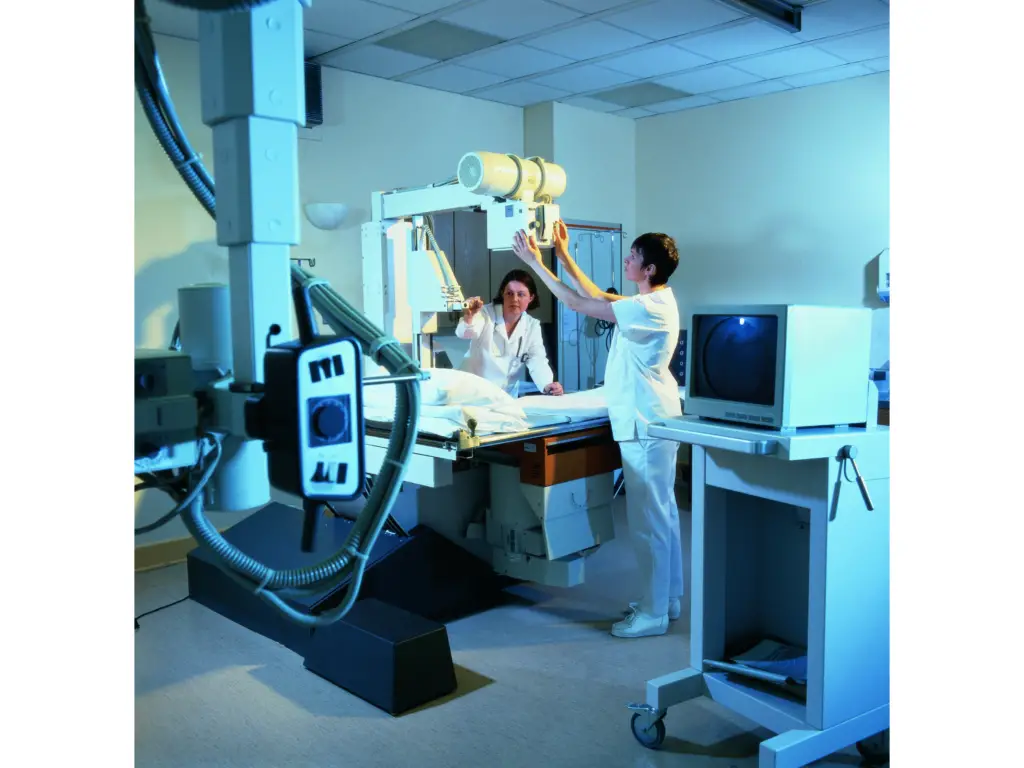Innovations in X-Ray Equipment: X-ray technology has been a cornerstone in medical imaging for over a century. Recent advancements have significantly improved image quality, reduced radiation doses, and enhanced productivity in healthcare settings.
Innovations in X-Ray Equipment
The advancements in image quality in modern X-ray technology mark a significant breakthrough in medical diagnostics. With the advent of high-resolution imaging, the latest X-ray machines are now capable of producing images of exceptional clarity. This high-resolution imaging allows for a more nuanced view of the internal structures of the body. Moreover, it makes it easier to identify and diagnose a wide range of medical conditions with greater precision.
Additionally, contemporary X-ray systems enhance the contrast and detail capabilities. This improvement means that subtle differences in tissue density and structure are more distinguishable. It also facilitates the detection of early-stage diseases or small anomalies that might have been missed with older technology. These enhancements in image quality not only aid radiologists in making more accurate diagnoses.
Innovations in Dose Reduction
The dose reduction in Innovations in X-ray equipment signifies a crucial development in patient care. These advancements include:
- New Safety Protocols: Implementing refined safety protocols drastically minimizes patient exposure to radiation.
- Technological Advances: Modern X-ray machines are now engineered to produce high-quality images with significantly lower radiation doses. Hence making the procedures safer.
- Automated Dosage Control: Enhanced systems automatically adjust radiation dosage based on patient size and the area being imaged, reducing unnecessary exposure.
- Use of Digital Radiography: Digital radiography requires less radiation to produce clearer images than traditional film-based methods.
- Advanced Shielding Techniques: Improved shielding around X-ray machines protects both patients and healthcare workers from stray radiation.
- Real-time Dose Monitoring: New technologies allow for real-time monitoring and adjustment of radiation doses during the imaging process, ensuring optimal safety.
- Educational Programs for Technicians: Ongoing education and training programs for radiographers and technicians focus on dose reduction techniques and patient safety.

Productivity Enhancements in X-Ray Technology
The innovations in X-ray equipment have witnessed significant productivity enhancements, reflecting a shift towards more efficient healthcare delivery. These improvements include:
- Faster Processing Times: Modern X-ray systems offer expedited image processing, substantially reducing the time patients spend waiting. This efficiency not only enhances patient experience but also allows medical facilities to handle a higher volume of cases effectively.
- Streamlined Workflows: With the integration of advanced software and hardware, the entire process of conducting X-ray examinations has become more streamlined. This results in a smoother, more efficient operation from patient check-in to final image analysis.
- Automated Image Analysis: Cutting-edge software now assists in the initial analysis of X-ray images, speeding up the diagnostic process and supporting radiologists in making accurate assessments.
- Integrated Patient Management Systems: The use of integrated systems that combine patient records with imaging data ensures a more coordinated approach to patient care, reducing administrative bottlenecks.
- Wireless Technology: The adoption of wireless detectors in X-ray systems allows for greater flexibility and speed in image capture, further enhancing efficiency.
- Cloud-Based Data Storage: Cloud-based solutions for storing and accessing X-ray images streamline the process of sharing and reviewing images among healthcare professionals, eliminating delays caused by physical image transfer.
- Enhanced Communication Tools: Improved communication tools within X-ray systems facilitate quicker decision-making and collaboration among medical teams, enhancing overall productivity.
Conclusion
The recent innovations in X-Ray Equipment represent a monumental stride in the field of medical imaging. These innovations not only substantially enhance diagnostic accuracy, but they also prioritize patient safety, ensuring minimal exposure to harmful radiation.
This progress in X-ray equipment is a testament to the relentless pursuit of excellence in healthcare, paving the way for more precise, efficient, and safer diagnostic procedures, ultimately contributing to better patient outcomes and streamlined healthcare delivery.
FAQs
- How have recent innovations improved the safety of X-ray procedures? Recent innovations have reduced radiation doses and introduced new safety protocols, making X-ray procedures safer.
- What impact have these advancements had on neonatal care? Specialized X-ray equipment in neonatal care has led to safer and more precise imaging for newborns.
- How do advancements in X-ray technology benefit healthcare providers? They result in faster, more efficient imaging processes, improving overall healthcare delivery.
- What are the future prospects for X-ray technology? Ongoing research promises more breakthroughs in image quality, safety, and efficiency.
- Can the latest X-ray technology detect conditions better than before? Yes, with higher resolution and enhanced contrast, conditions can be diagnosed more accurately.

